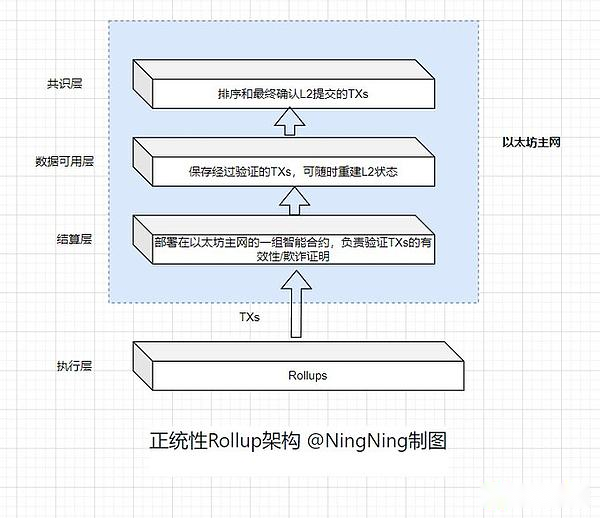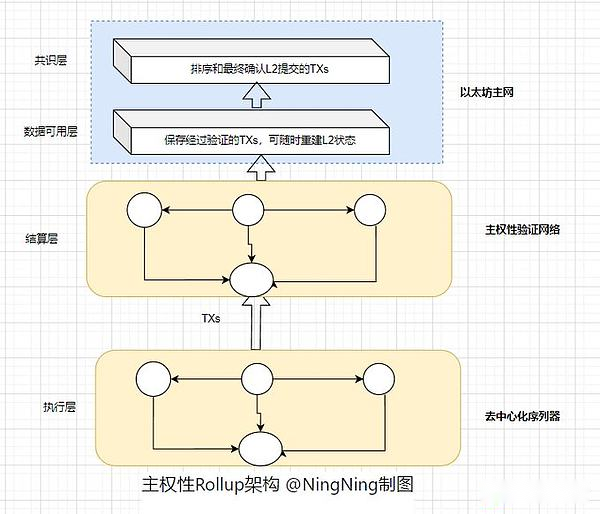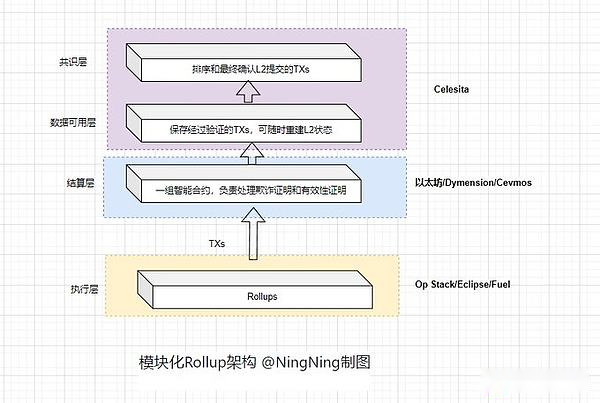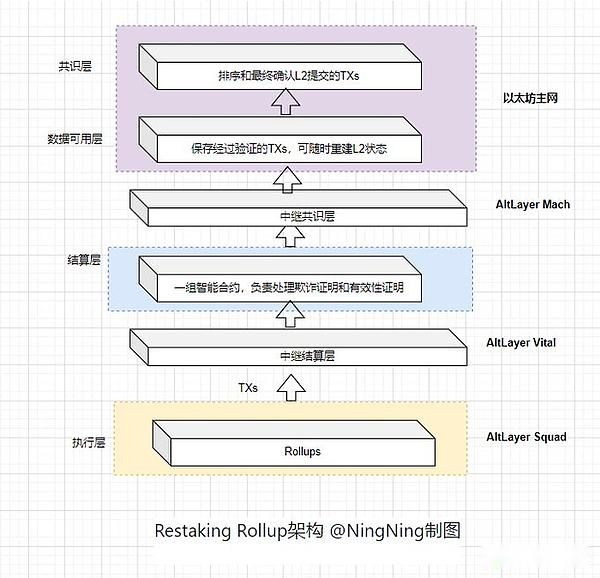
Author: ningning, independent researcher Source: X, 0xning0x
The current situation of the Rollup market -orthodox Rollup, sovereign Rollup, modular Rollup and ROSTAKING
One of the themes of the 23 -year scalability competition market is that Rollup devour the TVL, users and ecological DAPPs of Alt L1.Arbitrum, Optimism, ZKSYNC, StarkNet, etc., as the Templar of Ethereum Ecology, have a lot of ecological skills in Ethereum.
But when Arbitrum tried to build the central radiation structure of the Rollup scalable route of L1-L2-L3 to stabilize its Rollup leader status and vested interests, things became incorrect.
Fortunately, neither Optimism and ZKSYNC followed up the brutal operation of Arbitrum. Instead, they chose the Stacks parallel structure and descended into the first instance of the Stack structure.
Moreover, even if it is not the Ethereum side chain Polygon on the side chain of Ethereum, there is no choice of Arbitrum’s route. Instead, you choose to follow up the route of Optimism and ZKSYNC to launch the Stacks parallel structure Polygon CDK.It’s just that the settlement layer of Polygon CDK is the main network of Polygon POS, not the main network of Ethereum.
However, RollUp, deployed by Stacks SDK, most of them need to share the availability and settlement layer with its shared data, and do not achieve true parallelism and sovereignty.
Compared with the 1024 pieces+1 shards in the Danksharding Size Vision of Ethereum, it is still far from the decentralized scalability architecture of N RollUp.
In the 24 years, under the stimulation of new primitives such as modularization and RESTAKING, Rollup has begun to differentiate 4 types: orthodox Rollup, sovereignty Rollup, modular Rollup, RESTAKING ROLLUP:
Orthodox Rollup
Orthodox Rollup actively pursues as one of the outsourcing vendors of the Ethereum executive layer. The pursuit of EVM equivalent is even Ethereum equivalent. Optimism, Linea, and Scroll belong to this category.The Arbitrum architecture is the same as them, but the pursuit of Ethereum equivalent is not as radical in the above three, but also centered on developers.
>
Sovereignty Rollup
The sovereignty Rollup is represented by the StarkNet jointly sponsored by Vitalik’s fucking Metis, Vitalik and ELI.
Their common architecture feature is to have decentralized serial network and sovereign verification network (settlement layer)
Because Metis adopts the OP Rollup mechanism, Starknet uses the ZK Rollup mechanism. Although their sovereign verification network architecture uses the design ideas of PBS (separation of block submitters and block builders), it is different: StarkNet’s sovereigntyVerifying the network architecture adds some node characters, such as the process responsible for generating ZKP (zero -knowledge proof).
And because the cost of ZKP validity verification is lower than the Cracks’ proof of fraud, StarkNet still uses Ethereum as a consensus layer and data available layer.
Metis simply achieves it, only the Ethereum main network is used as a MEMO storage or a bulletin board.Its relationship with Ethereum main network, similar to the relationship between most Bitcoin L2 and Bitcoin main network, can be described as sovereignty.
>
Modular Rollup
Modular Rollup is currently divided into two seed types: DAPP ROLLUP, such as vestance such as Manta and AEVO, LYRA, Lyra, etc.
The current state of modular Rollup makes people feel that the DA layer is only changed from Ethereum to Celesita, Avail and other modular blockchain DA.
But this idea ignores the deep significance of modular Rollup, that is, modular Rollup is the innovation and challenge of the current mainstream Rollup center radiation structure.
The modular Rollup has given DAPP developers from the ability to escape from Ethereum and Universal L2, which can alleviate the strange phenomenon of currently facing the Ethereum Foundation and VC to build ROLLUP, and return to the user -centric product paradigm.
>
RestAKING ROLLUP
RESTAKING ROLLUP is a new primitive launched by RaaS service provider Altlayer and Eigenlayer.
Compared with Metis in the sovereign Rollup, its verification network and consensus network are guided from the EIGENLAYER AVS node network. Economic security comes from ETH and LST of RESTAKING. The security is higher than that of the L2 native token guarantee.
RestAKing Rollup, inserted a relay layer called Altlayer Vital before the settlement layer. Before the consensus layer and data available layer, a relay layer named Altlayer Mach is carried on the settlement layer, consensus layer and data respectively respectively.Some functions of the available layer.
This architecture can improve Rollup’s security, final confirmation, and reducing data availability verification costs.
>
RestAKing Rollup also greatly reduces the threshold and cost of deploying rollup. At present, Altlayer supports zero code in 5 minutes to deploy 1 Rollup.
The above four types of medium orthodox rollup and sovereignty ROLLUP are mainly general Rollup, occupying most of the market share.However, their deployment and operating costs are very heavy, which is not suitable for DAPP developers.
The modular Rollup and Rolling Rollup of the light protocol paradigm have given new options for DAPP developers in 24 years.








